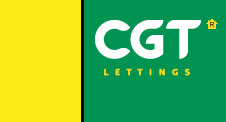Making Tax Digital is a government initiative that has already began to transform how people and businesses keep financial records and report/pay their tax.
Being phased in over several years, the government says it is introducing Making Tax Digital to make it easier for people and businesses to manage their tax affairs and “get their tax right”. HMRC believes that digitising the UK tax system through Making Tax Digital will help to prevent avoidable mistakes that are believed to cost many billions of pounds a year in lost tax revenue.
There are large implications for those who pay Income Tax via Self-Assessment, including landlords with taxable income of more than £50,000 a year. So, if you’re among them, what do you really need to know about Making Tax Digital for Income Tax Self-Assessment.
1. When will it be introduced?
MTD was due to be introduced from 6 April 2023, but the government has put this back until 6 April 2026.
You must comply with the requirements from 6 April 2026 if your taxable income is more than £50,000 a year, whether that’s just from rent or rent and self-employment. This applies to rental properties and furnished holiday lets.
You must still file a Self-Assessment tax return (SA100) for the tax year before you comply with MTD for Income Tax Self-Assessment requirements. You can sign up via the gov website (Gov.uk) now for your current or next accounting period but if you need to report income from other sources (eg wages from employment) you can’t currently sign up voluntarily.
2. How will I do this?
When fully introduced (or if you join voluntarily), you (or your accountant if they look after your tax affairs) will need to use MTD-compatible software to maintain and report digital records of your rental income and expenses.
If you already use software to maintain your financial records, HMRC recommends asking your provider whether their software is or will be MTD-compatible. If not, you’ll need to research other options. The GOV.UK website lists software that is current;y compatible with Making Tax Digital for Income Tax.
If you currently maintain financial records in paper form, you’ll need to find an MTD-compatible software alternative and learn to use this instead.
3. How will the process work?
Its recommended you update your software records on the transaction date (ie when you pay money out or receive taxable rental income) or as soon after as possible. You must do it before your quarterly update is submitted for that period.
The MTD-compliant software will summarise your figures, which you must send online via your HMRC digital account, it will then show you how much tax you owe, enabling better budgeting for your tax bill.
At the end of the tax year, you’ll need to finalise your rental income and submit a final declaration, confirming that the updates you’ve provided are accurate, with any accounting adjustments made.
Soon after, you’ll soon receive your tax bill. You must submit your final declaration and pay the tax you owe by 31 January the following tax year. But watch out as late-submission/payment fines will apply.
Angharad Trueman - Managing Director
Found this interesting? Check out my blog on changes to Capital Gains Tax HERE.
